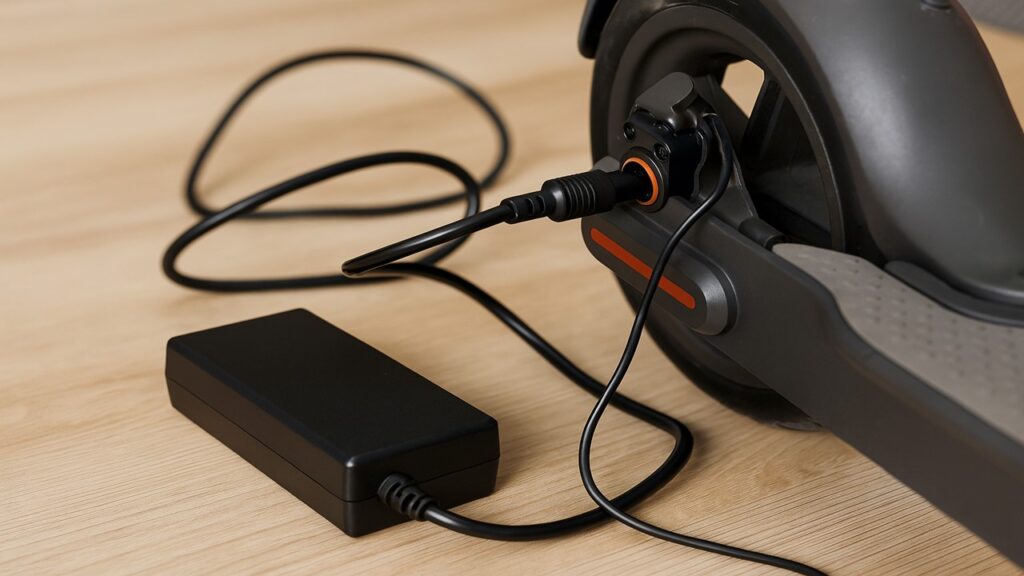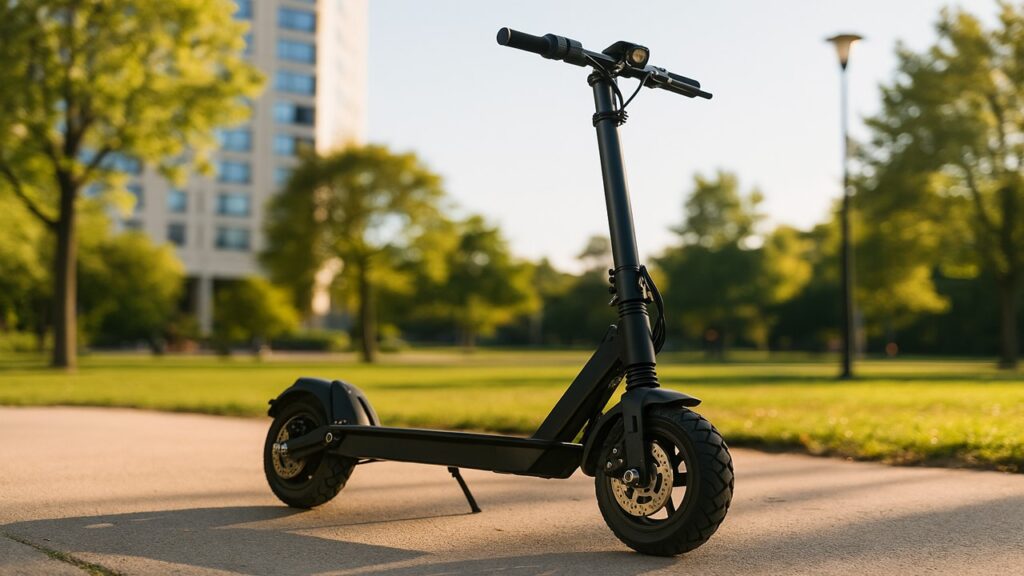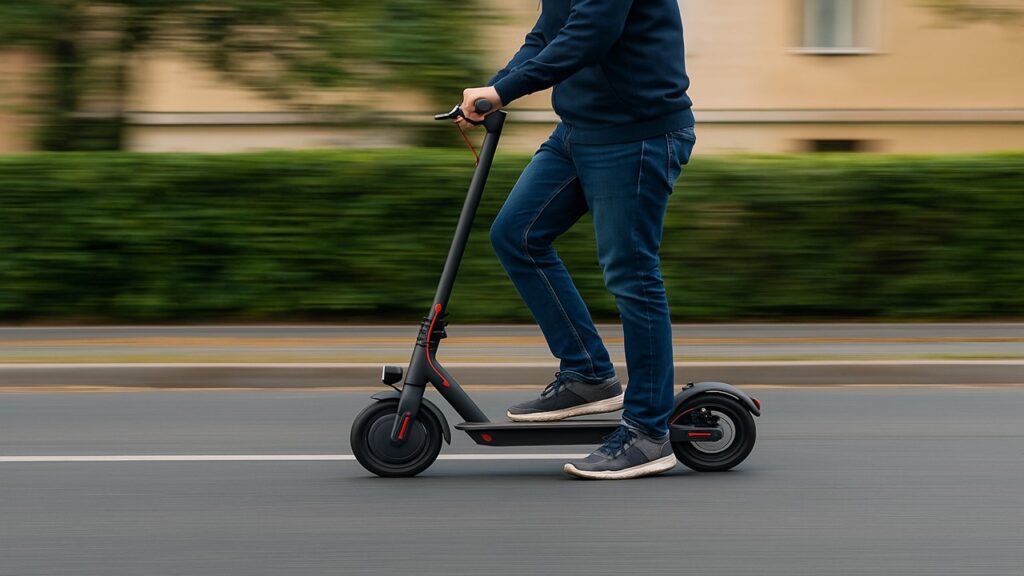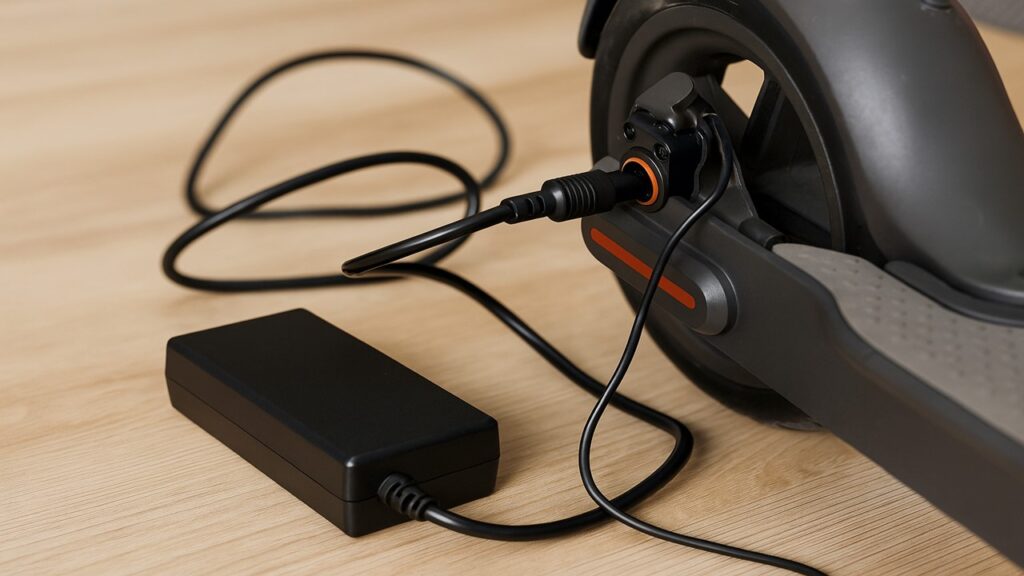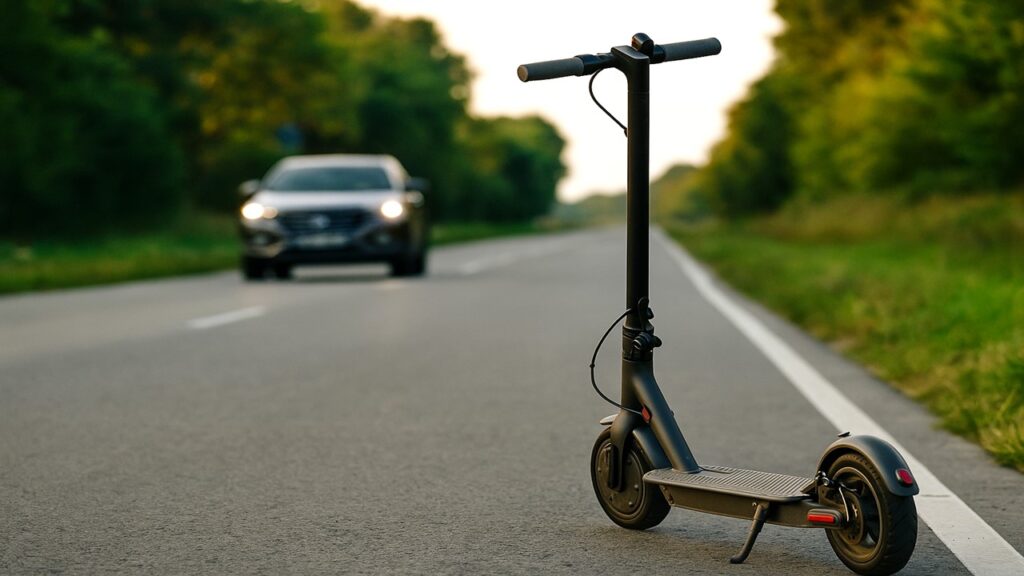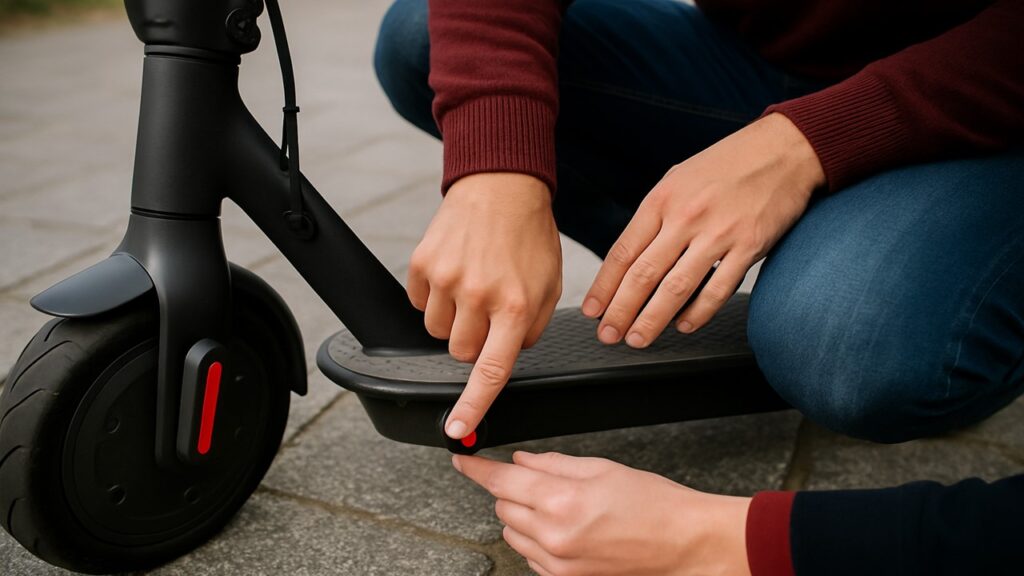
Resetting an electric scooter is often the quickest way to fix software glitches, unresponsive controls, or persistent error codes. A reset restores the scooter’s system to normal operation without requiring complex repairs.
Key Summary
- Resetting an electric scooter can fix frozen controls, error codes, and other software glitches.
- The reset method varies across brands, with some using hidden buttons, button combinations, or app-based options.
- Preparing properly—charging the battery, turning the scooter off, and checking the manual—makes the process safe and effective.
- If a reset doesn’t solve the problem, the issue may be hardware-related and best handled by a service center.
Why You Might Need to Reset Your Electric Scooter
Sometimes scooters stop working correctly, and a reset is the simplest solution. It can clear errors, restore settings, and get you back on the road quickly.
Common reasons include:
- Software glitches: Updates or bugs may cause the scooter to freeze or misread data.
- Error codes: Persistent warning lights or codes often point to a system error that a reset can clear.
- App or Bluetooth issues: A reset refreshes the connection and restores pairing.
- Unresponsive controls: When the throttle, brake, or power button doesn’t respond, resetting often restores functionality.
- Factory restore needs: Riders sometimes reset their scooters to return settings to default after experimenting with modes.
By addressing these problems through a reset, you can often avoid unnecessary trips to a service center.
Signs That Indicate a Reset is Necessary
If your scooter starts behaving strangely, it may be a signal that the system needs to be reset.
Key signs include:
- Power issues such as failure to turn on or random shutdowns.
- Battery misreadings like fast drain or incorrect charge display.
- Controls that stop responding during use.
- Error messages that remain on the screen.
- Repeated Bluetooth or app disconnections.
These symptoms suggest the scooter’s software is struggling and could benefit from a reset.
Power and Startup Issues
Scooters that fail to power on, restart on their own, or remain stuck in startup mode often need a reset. The reset clears errors that prevent the scooter’s system from booting properly.
Battery and Performance Errors
When the display shows the wrong battery level, or when the scooter loses power unexpectedly, it often points to miscalibrated data in the controller. A reset helps refresh the system and correct those readings.
Connectivity and Error Codes
If your scooter constantly disconnects from its app or shows persistent error codes like E1 or E2, a reset can clear the logs and restore stable performance.
Preparation and Safety Before Resetting
Before resetting, it’s important to prepare properly, so the process is safe and effective. Skipping these steps can cause more problems than it solves.
Key preparation steps include:
- Charge the battery: Make sure the scooter has at least 20–30% charge. A reset may fail or even corrupt settings if the battery dies during the process.
- Turn off the scooter and unplug it: Disconnect from the charger and switch the scooter off completely. This prevents short circuits or data errors.
- Place the scooter on stable ground: A flat, dry surface avoids movement or accidental tipping while you’re working.
- Check the user manual: Each brand may have unique reset requirements. Confirm the right sequence before you start.
- Back up app settings: If your scooter pairs with a mobile app, consider saving custom speed modes or PIN codes since a factory reset will clear them.
Taking these precautions ensures the reset process goes smoothly and avoids unnecessary damage.
Step-by-Step: Universal Reset Guide
Most scooters follow a similar reset pattern, even if brands vary in details. If you don’t have your manual handy, these general steps work for many models.
The reset process usually looks like this:
- Power off the scooter: Shut it down completely before starting.
- Locate the reset method: This may be a hidden button, a button combination, or an app option.
- Press and hold to reset: Hold the reset button or combination for 5–15 seconds until the scooter flashes, beeps, or restarts.
- Wait for confirmation: Some scooters reboot automatically; others need to be turned on again manually.
- Test the scooter: Check throttle, brakes, lights, and display to confirm everything is working.
Following these steps gives you a reliable way to restore your scooter’s normal operation without advanced tools.
Where to Find the Reset Button on Your Scooter
The reset button is often small, recessed, and easy to miss. Its location varies by brand, but there are a few common places to check.
- Near the charging port: Many scooters hide the button beside or beneath the charging socket, sometimes under a rubber flap.
- Under the deck: Look near the controller housing; this is common for Razor and GoTrax models.
- Inside protective covers: Some scooters require lifting a plastic cap or panel to access the button.
If you still can’t find it, consult the manual or manufacturer website.
Brand-Specific Reset Instructions
Different brands use slightly different reset methods. Knowing the correct sequence for your model saves time and prevents mistakes.
Here are some of the most common reset approaches:
- Xiaomi M365/Pro: A long press on the power button usually clears errors.
- Segway Ninebot Max: Uses a brake + power button combo, and some versions also support app resets.
- GoTrax: Often relies on a small recessed reset switch near the charging port.
- Levy Scooters: Reset involves a button sequence, and swappable batteries may affect the process.
- Razor E-Series: A dedicated switch under the deck is used, especially after overload trips.
- Kugoo Models: Reset can be performed via the companion app or with a hidden button, depending on the model.
Reset Methods by Brand
| Brand/Model | Reset Method | Notes |
| Xiaomi M365/Pro | Hold power button 5–10s until screen flashes | Clears most software errors |
| Segway Ninebot Max | Press brake + power button 3s | Some models also support app reset |
| GoTrax | Recessed reset button near charging port | Check manual for exact placement |
| Levy | Button sequence; may involve swappable battery | Firmware resets via app optional |
| Razor E-Series | Small reset switch under deck | Often trips after overloads |
| Kugoo | Reset through app or hidden button | Varies by model |
How to Reset Without a Reset Button
Not every electric scooter includes a visible reset switch. In these cases, the manufacturer usually provides alternative methods. These options achieve the same outcome—restoring the scooter’s software to its default state—but require different steps.
The most common method is using button combinations. Many scooters allow a reset by pressing and holding the brake lever, throttle, and power button in a specific sequence. Timing matters here; holding too long or too short may not trigger the reset. Always confirm with your model’s manual before trying.
Another option is a hard reset by temporarily disconnecting the battery. This cuts power to the controller and clears memory. It should only be done as a last resort because it requires opening the scooter and risks voiding the warranty. If you choose this route, disconnect the battery carefully, wait at least one minute, and reconnect it before powering on.
Resetting an Electric Scooter Using the Mobile App
Modern scooters often integrate with mobile apps, making resets easier and more user-friendly. Once paired via Bluetooth, most apps provide a settings menu where you can choose “Factory Reset” or “Restore Defaults.” This process refreshes the firmware and clears stored errors without needing to open the scooter.
After completing the reset, it’s wise to check for software updates. Manufacturers frequently release patches that fix known bugs or improve stability. Updating immediately after a reset ensures your scooter runs on the latest version and helps prevent recurring issues.
Battery Reset vs Controller Reset (Key Differences)
Many riders confuse resetting the battery with resetting the scooter’s controller, but they serve different purposes. A battery reset involves recalibrating or disconnecting the battery management system (BMS). This step can help when the scooter shows incorrect charge levels or refuses to power on, but it is hardware-focused and often requires professional handling.
A controller reset, on the other hand, focuses on software and system settings. It clears error codes, restores factory defaults, and fixes communication glitches between components like throttle, brakes, and display. This is the standard reset most riders perform.
The key difference lies in risk. A controller reset is simple and safe for everyday troubleshooting, while a battery reset is more complex and can be hazardous if done incorrectly. Understanding which reset your scooter needs saves both time and unnecessary repairs.
Troubleshooting: If Reset Doesn’t Work
Sometimes a reset isn’t enough to fix the problem. When issues persist, it’s important to move step by step rather than guessing.
Possible next steps include:
- Retry the reset: Carefully repeat the procedure, making sure timing and sequence are correct.
- Check for firmware updates: Use the scooter’s app to install the latest version.
- Inspect wiring and connectors: Loose or damaged cables may mimic software problems.
- Contact manufacturer support: Provide your model and serial number for tailored guidance.
- Seek professional repair: If under warranty, use an authorized service center.
Software and Firmware Fixes
If the scooter still misbehaves after a reset, the next logical step is a firmware update. This refreshes the software and can solve deeper glitches that a simple reset cannot. Always download updates from the official app or support site to avoid compatibility issues.
Hardware Inspection
Persistent problems may come from physical faults rather than software. Check for frayed wires, loose connectors, or water damage. Even small cracks in the controller housing can interfere with signals. If you’re not confident in handling electronics, avoid disassembly and move to professional help.
Contacting Support or Service
When both reset and self-inspection fail, it’s time to call support. Most major brands like Xiaomi, Segway, and GoTrax have online help centers and warranty services. Having your scooter’s details ready speeds up the process. If out of warranty, independent repair shops familiar with e-scooters can handle complex hardware issues.
Risks and Precautions of Resetting Incorrectly
Resetting your scooter is usually safe, but doing it the wrong way can cause serious issues. A poorly timed reset may corrupt the controller’s firmware, leaving the scooter unresponsive. Riders sometimes call this “bricking,” because the scooter won’t turn back on without professional repair.
Another risk is hardware damage. Disconnecting the battery carelessly or pressing the wrong switches may cause short circuits. Lithium-ion batteries in particular are sensitive and can overheat if handled incorrectly. That’s why manufacturer instructions should always guide your reset attempts.
Warranty concerns also come into play. Most brands allow resets through buttons or apps without issue, but opening the scooter to access internal components can void coverage. If your scooter is still under warranty, stick to approved reset steps and avoid unnecessary disassembly.
How to Prevent Frequent Reset Issues
The best way to avoid constant resets is to maintain your scooter properly. Good care keeps both software and hardware running smoothly.
Helpful prevention tips include:
- Charge correctly: Use the original charger and avoid draining the battery to zero or overcharging. This reduces stress on the electronics.
- Keep firmware updated: Regular updates fix software bugs that could otherwise cause repeated resets.
- Avoid extreme conditions: Don’t ride in heavy rain, through deep water, or in very high/low temperatures. These stress the scooter’s electronics.
- Inspect regularly: Tighten bolts, clean components, and check for loose wires. Preventing small problems keeps the system stable.
By building these habits, riders minimize the need for resets and extend the life of their scooters.
When to Consult a Professional Instead of Resetting
A reset isn’t always the right answer. Some issues are too complex or risky to handle alone.
Situations where expert help is best:
- Multiple failed resets: If the scooter still misbehaves after two or three proper attempts, the fault may not be software-related.
- Physical damage: Broken parts, burnt smells, or exposed wiring need professional attention.
- Battery problems: Swelling, overheating, or refusal to charge are warning signs. These require safe handling.
- Warranty coverage: If your scooter is still covered, avoid risky DIY fixes and let the manufacturer handle it.
Knowing when to stop trying saves time and protects your scooter from further harm.
Read more: Why is my electric scooter not turning on
Final Thoughts
Resetting an electric scooter is often the fastest way to clear errors, restore responsiveness, and get back on the road. With proper preparation, most riders can handle a reset at home, whether through a hidden button, a button combination, or a mobile app.
The key is to follow safety steps, understand your model’s reset method, and test the scooter after the process. If problems continue, firmware updates or professional service may be required.
By combining regular maintenance with careful troubleshooting, you can keep your scooter reliable and avoid frequent reset frustrations.
FAQs
What does resetting an electric scooter do?
Resetting clears stored error codes, restores factory settings, and refreshes the controller software so the scooter functions normally again.
Will resetting erase my custom settings?
Yes. Speed modes, PIN codes, and light preferences usually return to their factory defaults after a reset.
Can resetting fix battery problems?
No. A reset only affects software and the controller. Physical battery issues require repair or replacement.
Does resetting void my warranty?
No, using official reset methods doesn’t void the warranty. However, opening the scooter or disconnecting the battery without authorization may.
How often should I reset my scooter?
Resets are troubleshooting tools, not routine maintenance. Only reset when you see clear signs of software errors or connectivity problems.

Max Volt is an electric scooter and e-bike enthusiast who rides daily and knows the nuts and bolts of every model. With years of hands-on repair experience and real-world testing, Max shares practical reviews, maintenance tips, and buyer guides to help riders choose the right gear with confidence. His mission is to make electric commuting safer, smarter, and more enjoyable for everyone.






